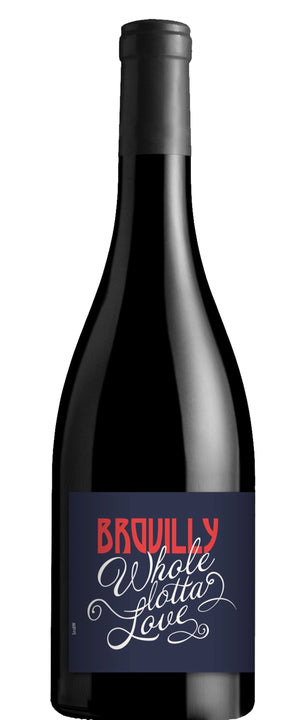EPI0519RW
Brouilly, Whole Lotta Love
2019
Beaujolais
Vin Methode Nature
Biodynamic farming
Wild yeasts
No Sulphur
Vegan
Most famous for Beaujolais Nouveau – a wine bottle only a few weeks after fermentation and drank on the 3rd Thursday of November – Beaujolais is an intriguing wine region. Whilst technically part of the Rhone commune it is more often than not considered part of Burgundy. Reds here are made from 100% Gamay. Gamay produces light, fresh and floral red wines, similar in style to Pinot Noir. Most Beaujolais is produced using semi-carbonic maceration in which the grapes are fermented in a carbon dioxide rich environment. This releases lots of colour and bright fruit characters without much tannic structure. Much of Beaujolais is granite with outcrops of schist in part of Morgon or Andesites in the Cote de Brouilly. In the Auvergne, gamay is planted on basalts and in the Côtes Roannaise there is again granite.
Sébastien grew up surrounded by the vineyards of southwest France, but his path to winemaking was anything but conventional. After a stint working on offshore oil rigs, he returned to France in 2011 and soon met Charlotte Congretel, whose family owned vines in Régnié. Love, family, and a shared passion for wine led to the birth of both their vineyard and their domaine, L'Épicurieux. The name pays homage to the Greek philosopher Epicurus, who believed in the pursuit of pleasure through balance, tranquility, and harmony—principles that guide Sébastien’s approach to winemaking. Under the mentorship of the revered Julien Sunier, he acquired parcels in Régnié and Morgon, including sites neighboring Guy Breton’s oldest vines. Though L'Épicurieux is a young domaine, Sébastien is committed to organic and biodynamic farming, recently securing the French natural wine certification "Vin Méthode Nature.“ For "Chacha," the vineyards are organically farmed, and the wine is fermented with wild yeasts, without any added sulfur. It is then aged for eight months in a 100-year-old foudre before undergoing extended bottle aging, resulting in a wine of depth, energy, and character.

Wine details
EPI0519RW
L'Epicurieux
Brouilly, Whole Lotta Love
2019
Beaujolais
Vin Methode Nature
Biodynamic farming
Wild yeasts
No Sulphur
Vegan
Most famous for Beaujolais Nouveau – a wine bottle only a few weeks after fermentation and drank on the 3rd Thursday of November – Beaujolais is an intriguing wine region. Whilst technically part of the Rhone commune it is more often than not considered part of Burgundy. Reds here are made from 100% Gamay. Gamay produces light, fresh and floral red wines, similar in style to Pinot Noir. Most Beaujolais is produced using semi-carbonic maceration in which the grapes are fermented in a carbon dioxide rich environment. This releases lots of colour and bright fruit characters without much tannic structure. Much of Beaujolais is granite with outcrops of schist in part of Morgon or Andesites in the Cote de Brouilly. In the Auvergne, gamay is planted on basalts and in the Côtes Roannaise there is again granite.
Sébastien grew up surrounded by the vineyards of southwest France, but his path to winemaking was anything but conventional. After a stint working on offshore oil rigs, he returned to France in 2011 and soon met Charlotte Congretel, whose family owned vines in Régnié. Love, family, and a shared passion for wine led to the birth of both their vineyard and their domaine, L'Épicurieux. The name pays homage to the Greek philosopher Epicurus, who believed in the pursuit of pleasure through balance, tranquility, and harmony—principles that guide Sébastien’s approach to winemaking. Under the mentorship of the revered Julien Sunier, he acquired parcels in Régnié and Morgon, including sites neighboring Guy Breton’s oldest vines. Though L'Épicurieux is a young domaine, Sébastien is committed to organic and biodynamic farming, recently securing the French natural wine certification "Vin Méthode Nature.“ For "Chacha," the vineyards are organically farmed, and the wine is fermented with wild yeasts, without any added sulfur. It is then aged for eight months in a 100-year-old foudre before undergoing extended bottle aging, resulting in a wine of depth, energy, and character.
